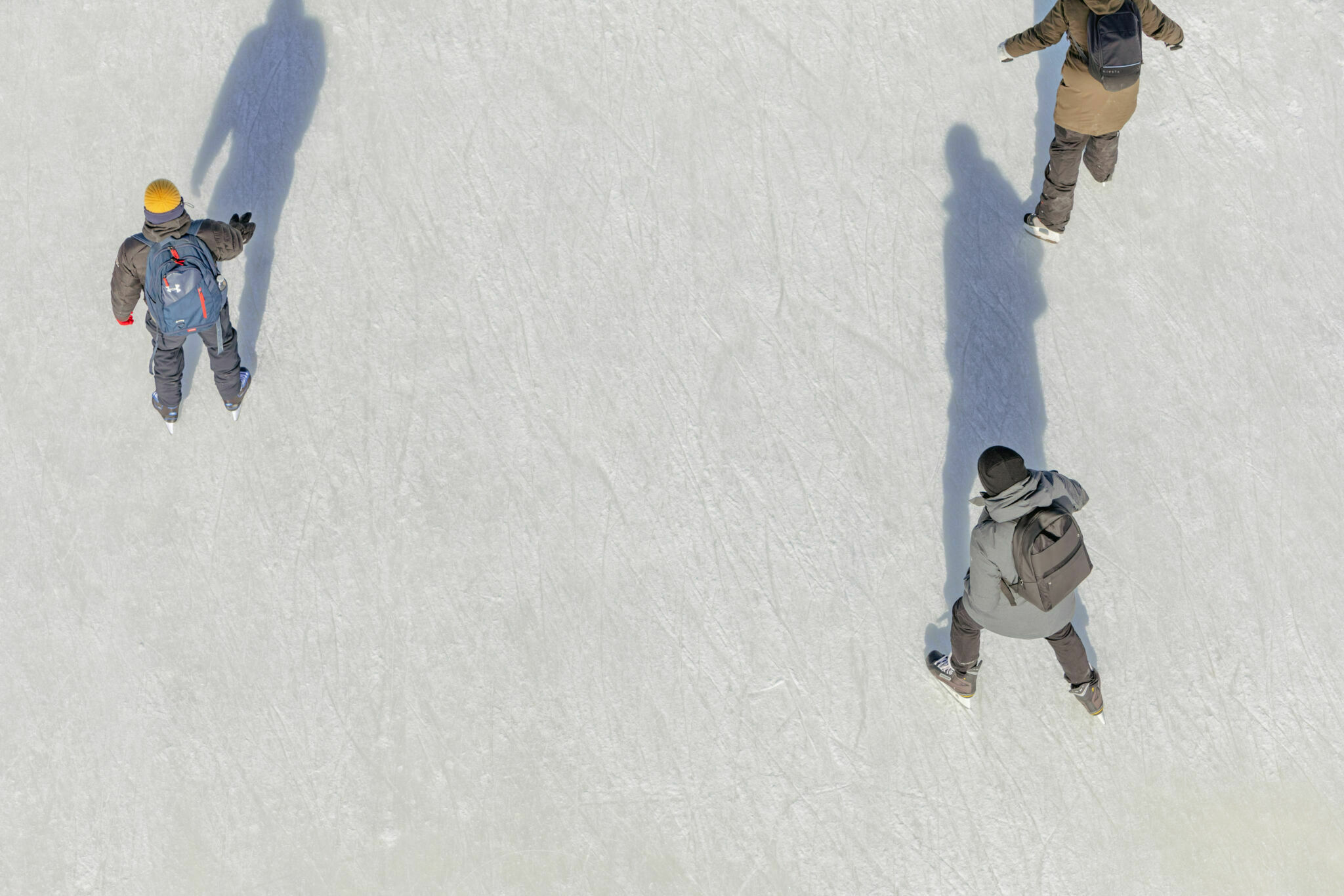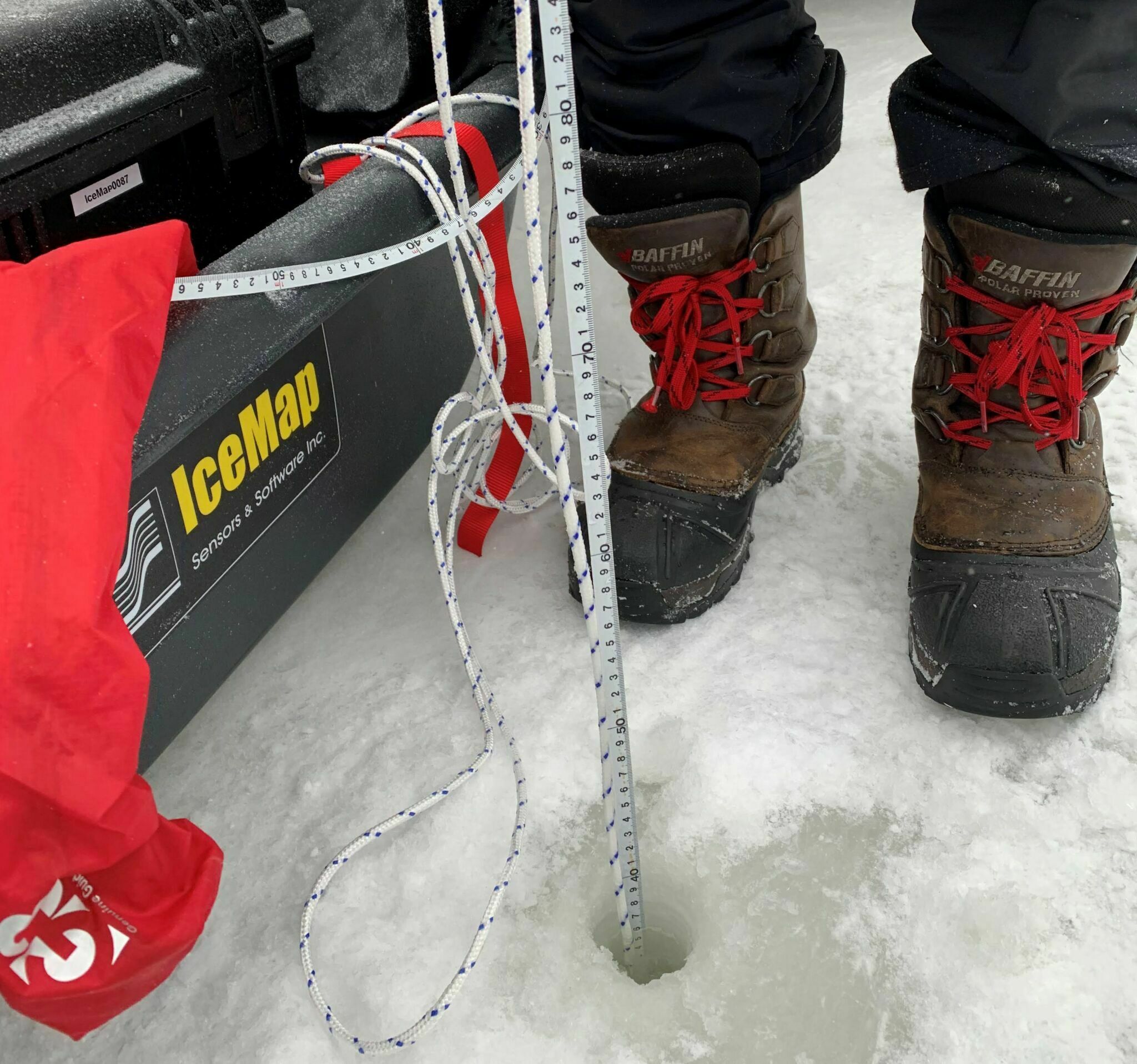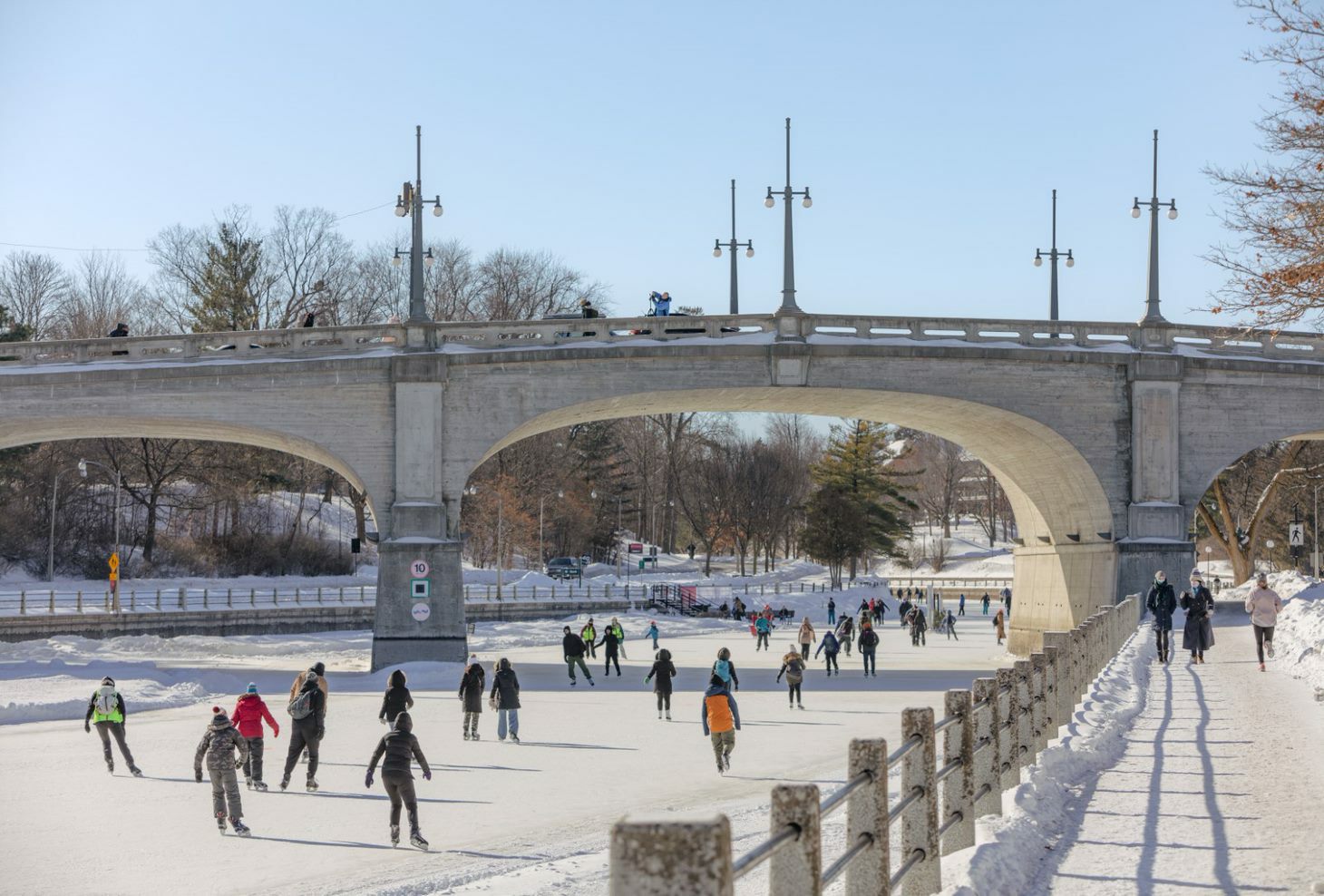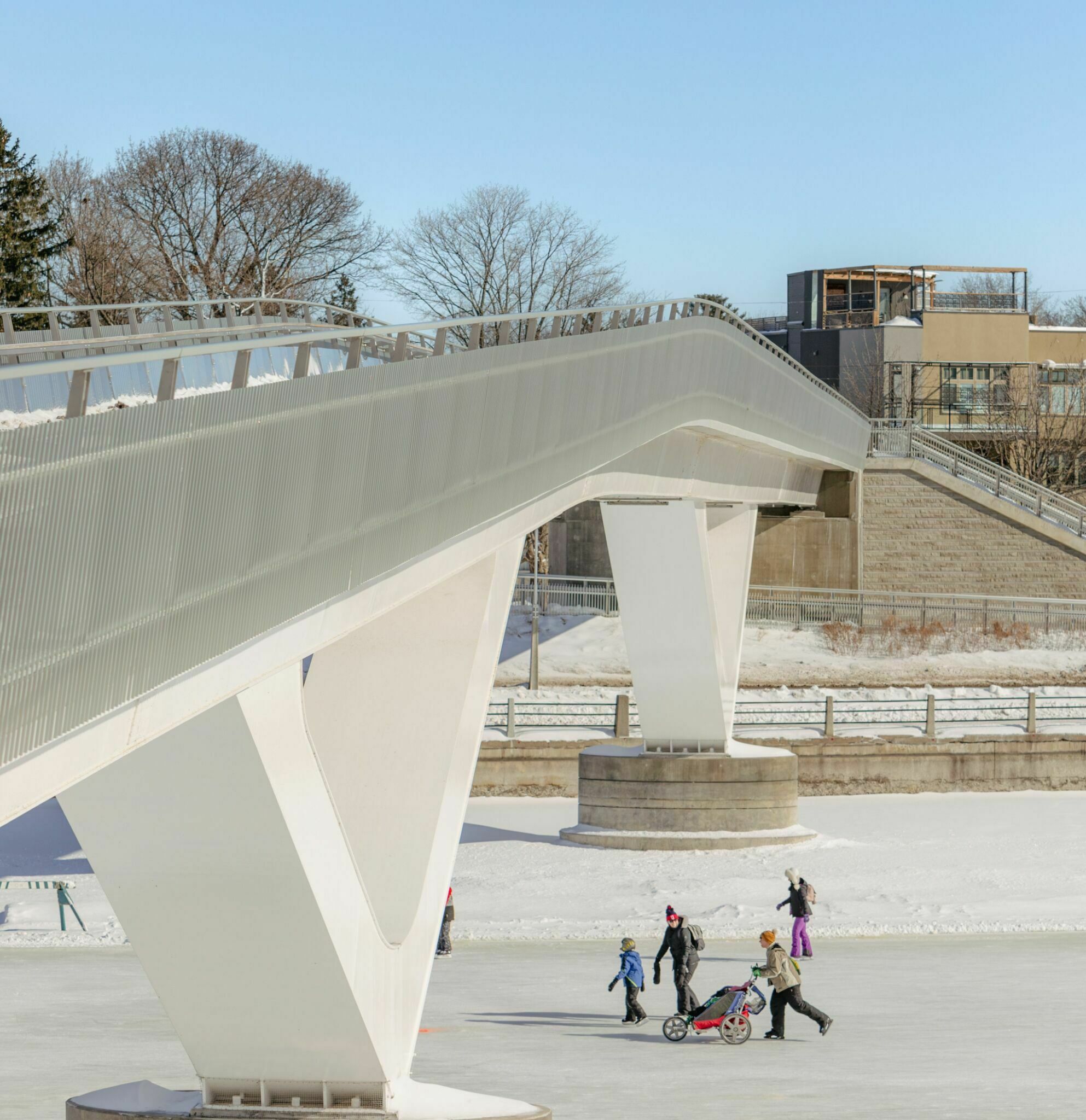
Joëlle Tourangeau
Communications Assistant, Strategic Communications

Ottawa is one of the coldest capitals in the world, and we really try to make the best of our long winters. Every year, hundreds of thousands of people make their way onto the world’s largest skating rink: the Rideau Canal Skateway.
Over the years, the NCC’s knowledge of the science of ice has grown. Innovation has kept our experts at the leading edge of ice maintenance. But, as winters get warmer and wetter, skating seasons shorten and ice quality decreases. In 2022, the NCC partnered with Carleton University to address the impacts of climate change on the Skateway. This collaboration aims to keep this decades-long tradition alive.
Shawn Kenny, a civil engineering professor from Carleton University, is one of the leads on this four-year collaboration. He’s working with our Skateway team to address the impacts of climate change. I met with him to talk about the science behind our climate change study.
From slush cannons to ice probes, there are many solutions on the table. Keep reading to learn more.
Gathering Data

Q: What are the main steps in this four-year project?
A: The first two years will be about gathering data to improve our knowledge base. Using temperature sensors, drones and remote-sensing tools, we will look at local weather, ice thickness and snow cover along the Skateway.
In the second and third years, as we collect more data, we will develop models to project or predict what will happen next. We will also explore solutions to lessen the impacts of climate change on the Skateway, and build the resilience of the ice.
In the fourth year and going forward, we will evaluate solutions from years two and three, and recommend solutions that the NCC should pursue over time. The long-term goal is to help the NCC make informed decisions on adapting its operations.
Understanding the Challenges the Skateway Faces
Q: What challenges are unique to the Skateway?

A: From an engineering perspective, the Skateway and ice roads are very similar. The main difference is the location. The Skateway is situated within an urban area, whereas most ice roads are in remote locations.
The Skateway faces urban pressures: surface water runoff, salt intrusion and heat from underground pipes, etc. The variation in depth is another challenge. It influences the heat and energy balance from the mudline to the ice cover.
Q: Which sections of the Skateway are more problematic?
A: The NCC has identified sections that can be problematic due to the urban stressors just mentioned. This includes the sections from Laurier Avenue to the National Arts Centre and from Concord Street to the University of Ottawa.
We also have a challenge with wider sections of the canal, such as at Concord Street and near Holmwood Avenue, as these are larger areas which support a lot of snow. This causes deflection of the ice, and may allow water to infiltrate upward through cracks. This can decrease the overall strength of the ice cover.
Finding Solutions

Q: Do you already have solutions in mind?
A: The ideas are still in development, but we are hopeful about three solutions: slush cannons, thermosyphons and enhanced snow management.
Solution #1: Early season enablers
Slush cannons would be useful to promote ice growth in the early part of the season. The idea is to spew slush onto the ice to make it thicker, faster. Pumps that use liquids and solids already exist in other industries, but the challenge will be to make a pump that works at a temperature of around zero degrees. Once it’s safe for crews to go onto the ice, standard flooding operations should resume, as they are more efficient.
Solution #2: Thermosyphons
Another technology that might have a high chance of success is one used in the Arctic, called thermosyphons. Simply put, a thermosyphon is a passive heat exchange system. This technology allows cold air to get beneath the foundation of a structure (like a building or a road embankment) and redistributes heat into the air, above the surface. If applied to the Skateway, this technology would promote ice growth by cooling the water beneath the ice.
Solution #3: Better snow management
We also need to find an efficient way to remove the snow when vehicles can’t go onto the Skateway. When snow accumulates, it forms an insulating blanket over the ice, and eats away at the surface. To freeze, ice needs to be exposed to as much air as possible. Snow needs to be moved, compacted, melted and flooded with water.
Snow removal is an energy-intensive process. For every centimetre of snowfall, the NCC crew moves almost 125,000 kilograms of snow off the Skateway. That’s approximately equivalent to the weight of
- 740,000 hockey pucks
- 25,000 shovelfuls of snow
- 280 polar bears
- 21 “Frosters” (giant ice resurfacers used to maintain the Skateway)
The Rideau Canal Skateway is in good hands, with the NCC’s Skateway team, along with the civil engineering students and their professors, working hand-in-hand on innovative solutions to the warming climate and its impact on the ice. We’re excited to see what the future holds for this iconic destination.
Are you interested in learning more about what the NCC is doing to adapt to climate change? Check out the other initiatives under the NCC’s climate change adaptation project.